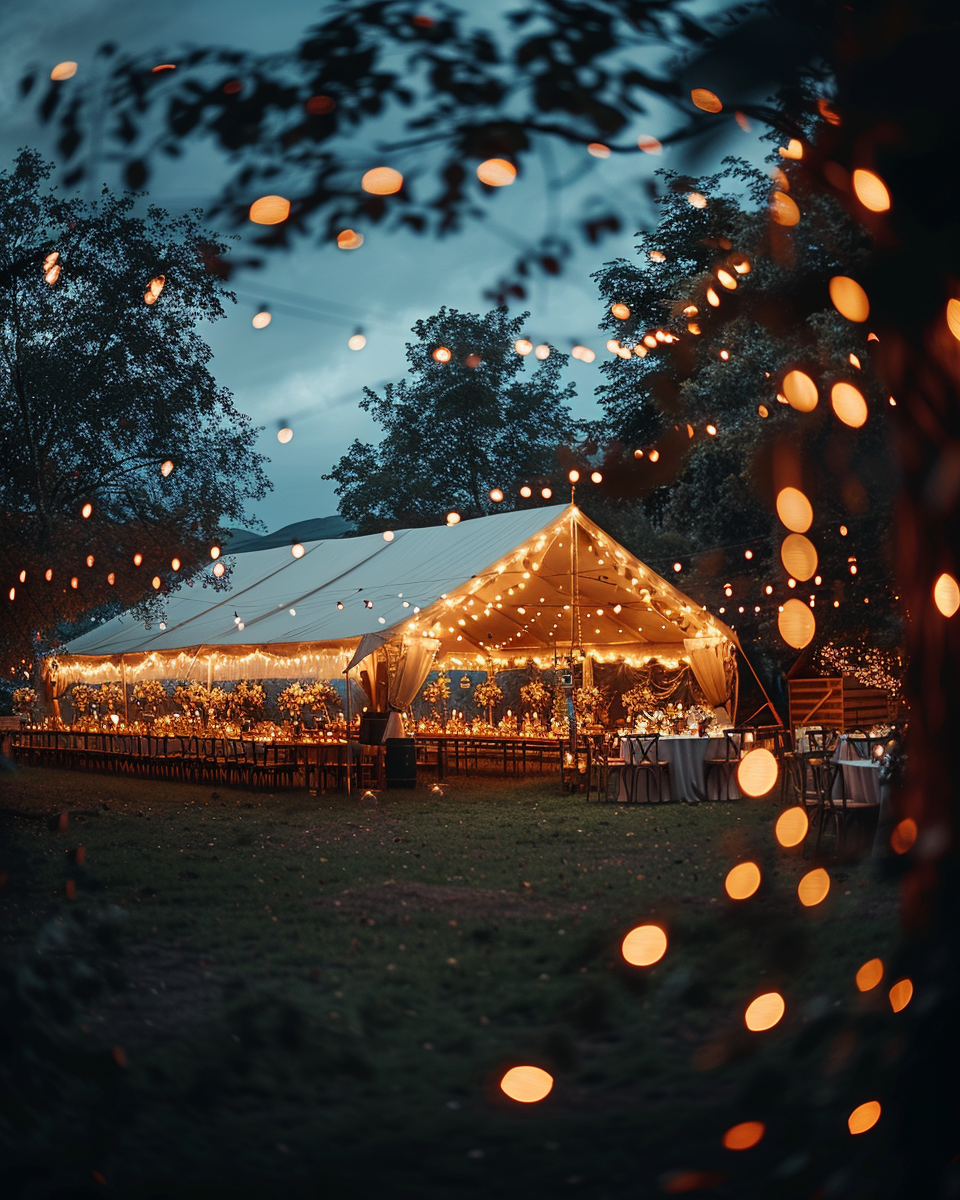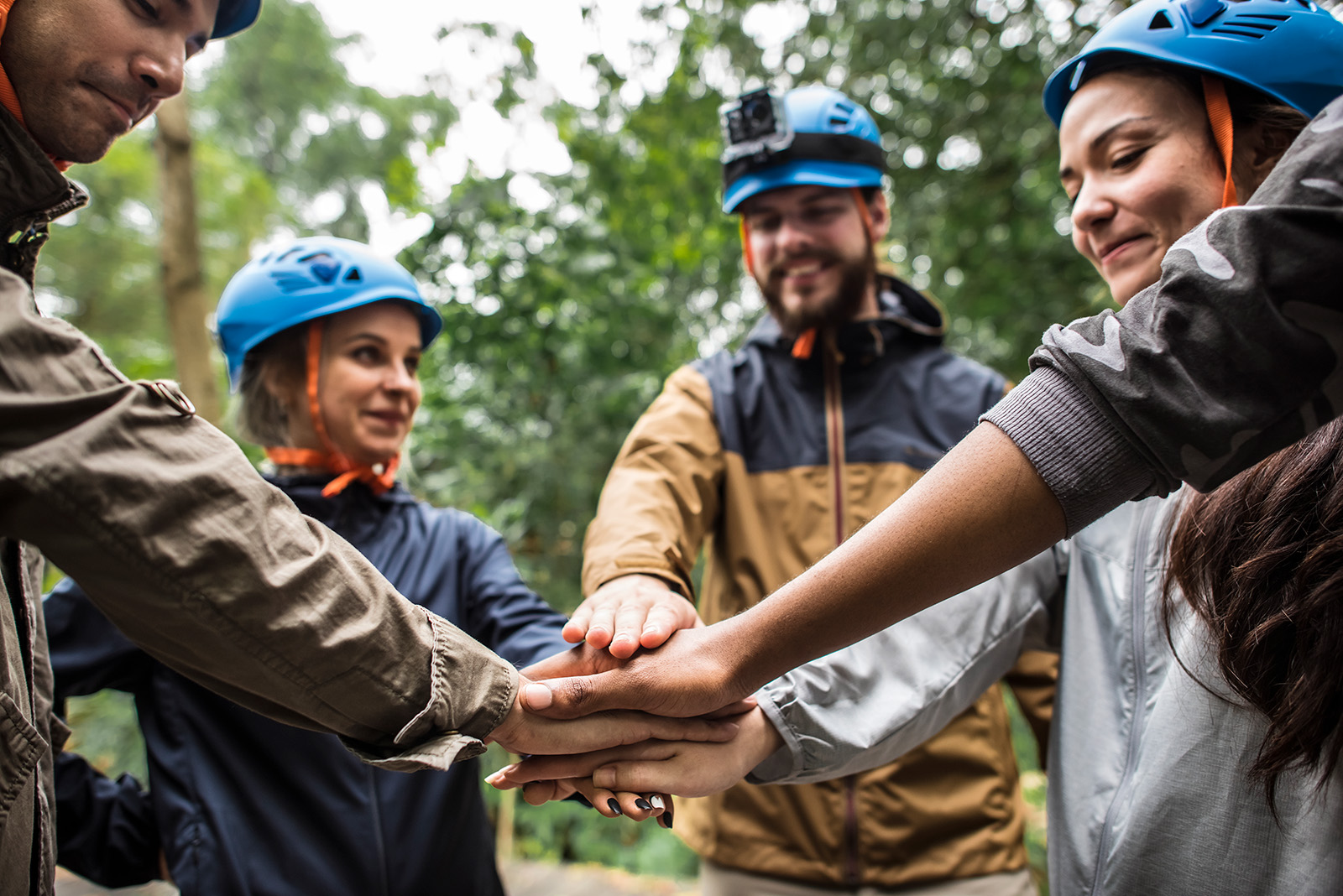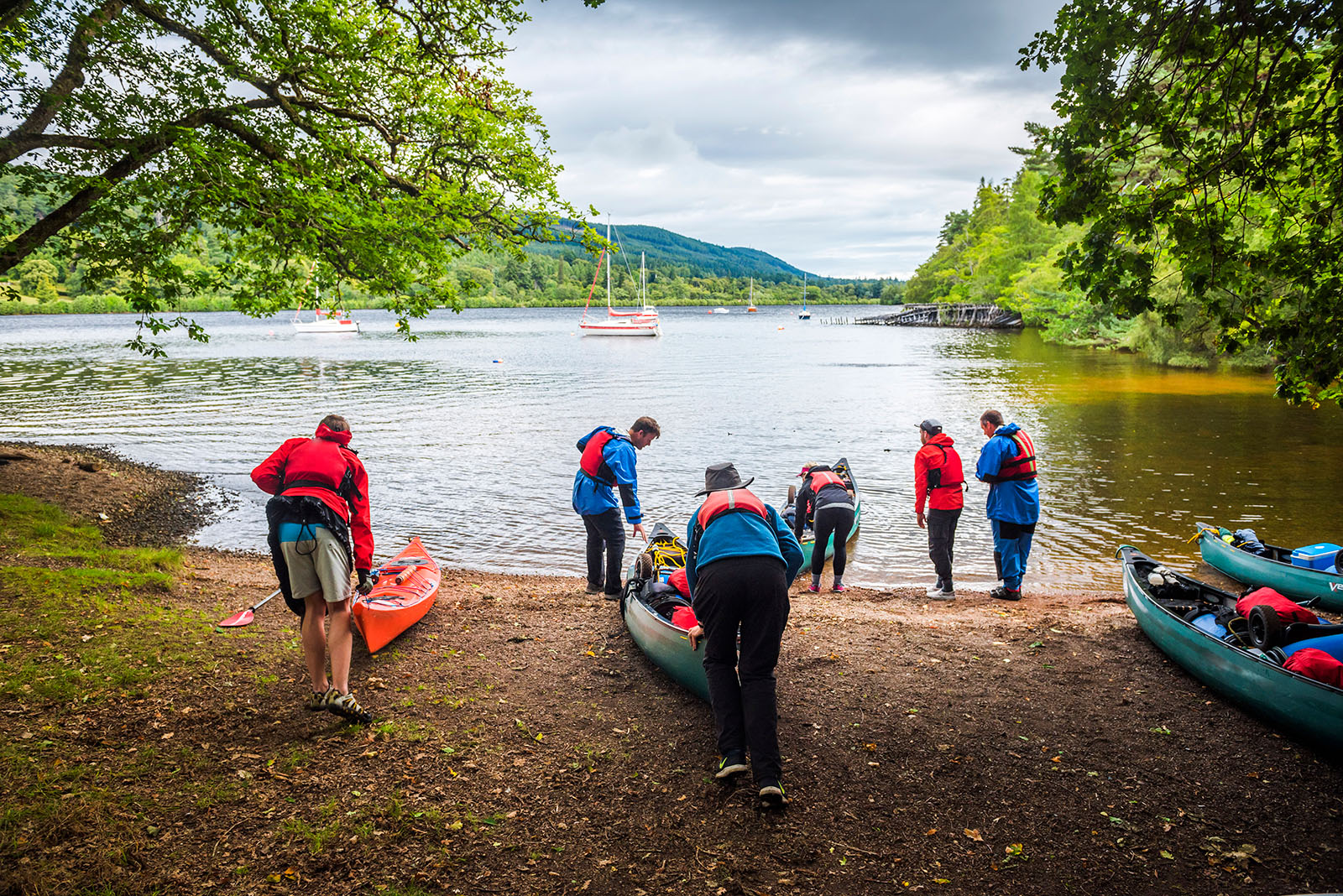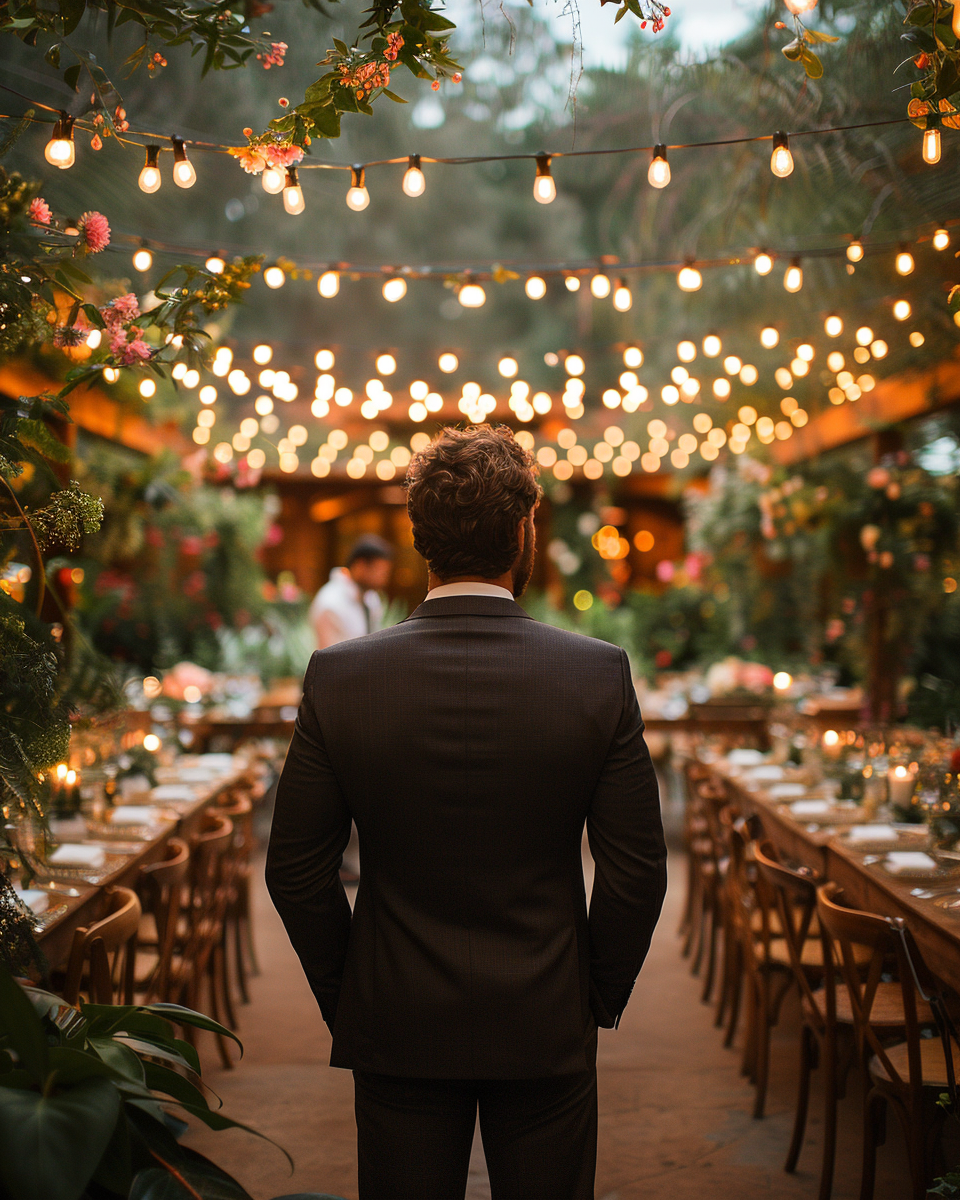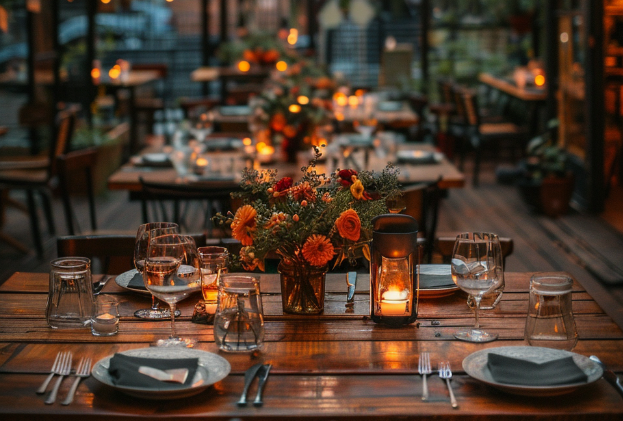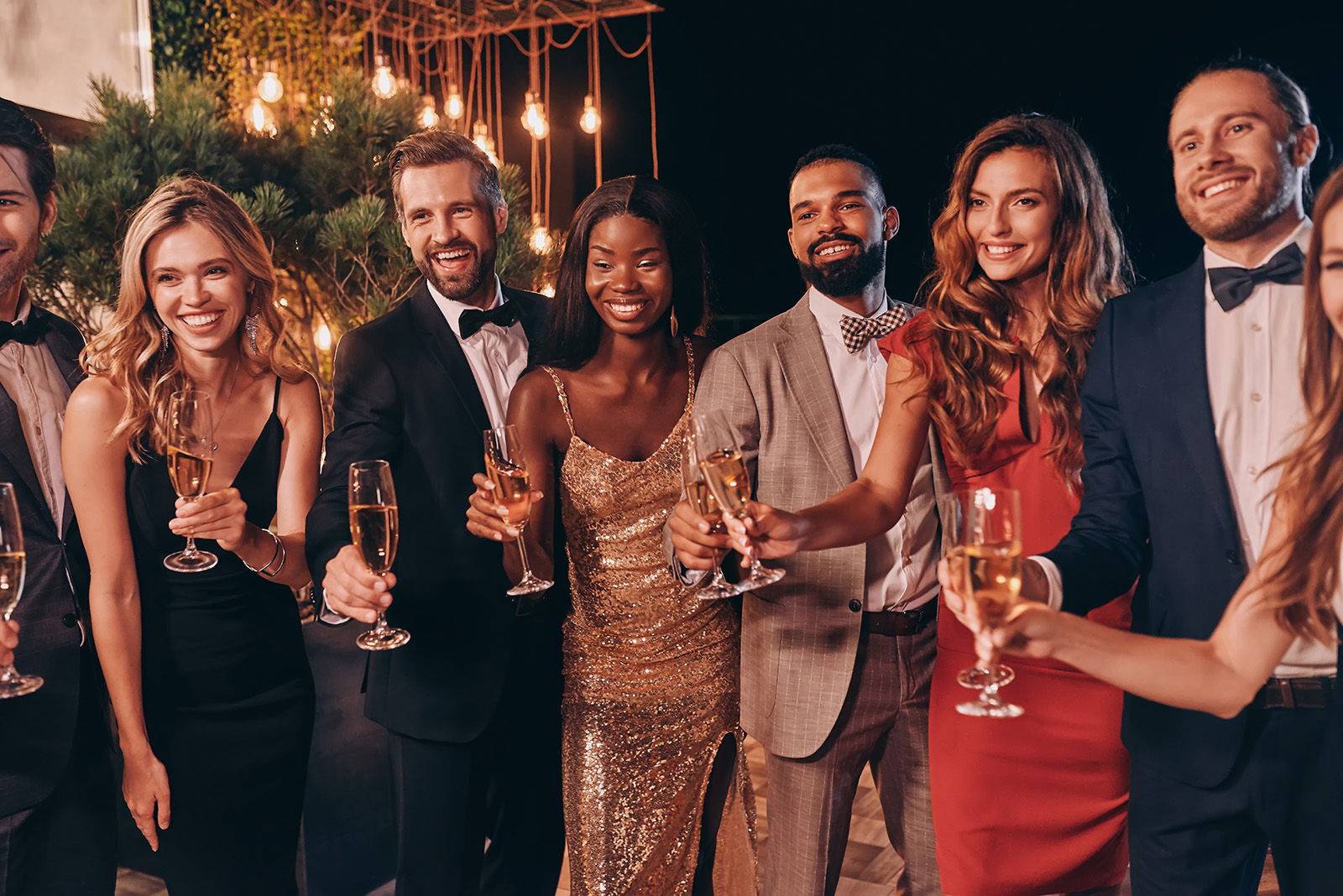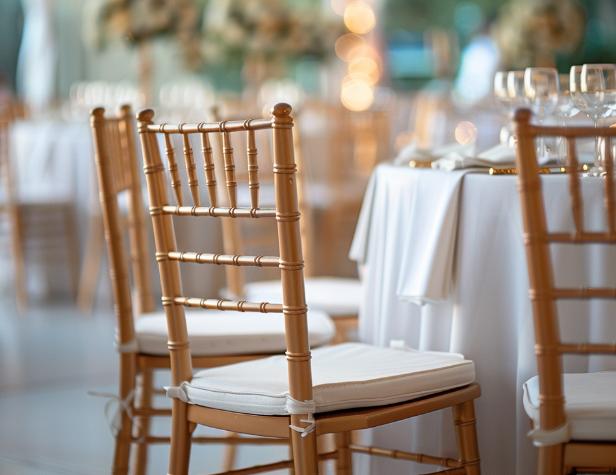
- Key Takeaways
- Quality and Variety of Chairs
- Superior Comfort for Guests
- Elegant Designs for Events
- Customization Options Available
- Professional Delivery and Setup
- Excellent Customer Service
- Competitive Pricing and Packages
- Frequently Asked Questions
- Final Thoughts
If you’re in the market for banquet chair rentals, you may have encountered a sea of options out there. But what sets top-tier providers apart from the rest?
Well, picture this – you walk into an event, and your eyes immediately gravitate towards the seating arrangement. The chairs not only complement the decor but also provide unmatched comfort. Intrigued?
Let’s uncover more reasons why opting for top-tier banquet chair rentals can elevate your event to the next level.
Key Takeaways
- Extensive chair variety for event customization
- Ergonomic designs for guest comfort and posture
- Service excellence with professional setup
- Competitive pricing with tailored solutions
Quality and Variety of Chairs
When choosing banquet chair rentals, you’ll be impressed by the extensive variety and exceptional quality available to suit your event needs. The chairs are designed for durability, ensuring they can withstand the wear and tear of numerous events while maintaining a stylish appearance. You’ll find a wide range of color options available, allowing you to match the chairs perfectly with your event’s theme or color scheme.
Regarding chair rental policies, you’ll discover flexible options that cater to your specific requirements. Whether you need chairs for a day-long conference or a weekend wedding celebration, rental periods can be customized to align with your event schedule. Pricing options are transparent and competitive, with clear breakdowns of costs so you can easily budget for your chair rental needs without any surprises.
The chair rental process is streamlined and efficient, with dedicated staff ready to assist you every step of the way. You can expect prompt responses to inquiries, seamless delivery and pickup services, and overall professionalism that sets a high standard in the industry. By choosing top-tier banquet chair rentals, you aren’t just getting chairs – you’re getting a service that prioritizes quality, variety, and customer satisfaction.
Superior Comfort for Guests
Get ready to elevate your event experience with banquet chairs that offer more than just a seat. Imagine your guests sinking into ergonomic designs that support their posture throughout the celebration.
The plush seating experience not only guarantees comfort but also adds a touch of luxury to your event, setting the stage for an ambiance that will leave a lasting impression on everyone in attendance.
Ergonomic Design Benefits
What makes ergonomic design in banquet chairs an essential element for ensuring superior comfort for your guests at events?
Ergonomic banquet chairs offer more than just a place to sit; they provide a supportive posture and long-lasting comfort for attendees. Here are five reasons why ergonomic design is vital for enhancing guest comfort:
- Adjustable Features: Chairs with customizable settings accommodate guests of all sizes.
- Lumbar Support: Ergonomic chairs promote proper spine alignment and reduce back strain.
- Breathable Materials: Fabrics that allow airflow prevent discomfort from heat and moisture.
- Armrests: Supportive armrests reduce tension in the shoulders and arms during extended periods.
- Padded Seats: Cushioned seating offers a soft surface for prolonged sitting without discomfort.
Plush Seating Experience
Crafting a plush seating experience is crucial for guaranteeing superior comfort for your guests at events. When you choose top-tier banquet chair rentals, you’re selecting luxurious comfort and premium seating that will elevate the experience for everyone attending.
Picture your guests settling into plush, cushioned seats that offer excellent support throughout the event. These chairs are crafted to provide not only style but also relaxation, allowing attendees to relish the gathering without discomfort. The premium seating guarantees that your guests feel valued and looked after, enhancing their overall event experience.
With top-tier banquet chairs, you can be certain that your guests will appreciate the attention to detail and the dedication to providing the best seating options available.
Enhanced Event Ambiance
Elevate the ambiance of your event by ensuring superior comfort for your guests with top-tier banquet chair rentals, providing a luxurious seating experience that will leave a lasting impression. Imagine the scene: your guests are comfortably seated, surrounded by a carefully curated atmosphere that exudes elegance and sophistication.
To achieve this level of ambiance, consider the following:
- Plush Seating: Opt for banquet chairs with cushioned seats and backrests for maximum comfort.
- Decorative Accents: Enhance the chairs with decorative sashes or covers to match your event’s theme.
- Soft Lighting Effects: Create a warm and inviting atmosphere with strategically placed lighting effects.
- Customizable Options: Choose chair designs that can be customized to complement your decor.
- Versatile Styles: Select chairs that come in various styles to suit different event themes and settings.
Elegant Designs for Events
Get ready to elevate your event with stylish seating options that exude sophistication and charm.
From classic designs to modern trends, you’ll find versatile chair choices that perfectly complement your event theme.
Let’s explore how these elegant designs can transform your venue into a sophisticated and memorable setting.
Stylish Event Seating
With a focus on elegant designs for events, our selection of banquet chairs elevates the ambiance and comfort of any occasion. Our stylish event seating options combine modern elegance with luxury seating to create a sophisticated atmosphere for your guests.
When you choose our top-tier banquet chair rentals, you can expect:
- Sleek and modern chair designs that complement any event theme.
- Plush cushioning for added comfort during long gatherings.
- High-quality materials that exude luxury and refinement.
- Versatile color options to match your event’s color scheme seamlessly.
- Ergonomic designs that prioritize both style and support for attendees.
Experience the perfect blend of style and functionality with our exquisite banquet chairs.
Versatile Chair Options
Discover a myriad of versatile chair options that seamlessly blend elegant designs with functionality for your upcoming events.
When considering chair layout and arrangement, top-tier banquet chair rentals offer a range of styles to suit your event’s theme.
From sleek Chiavari chairs to luxurious velvet options, these chairs can be further enhanced with chair accessories and customization, such as chair covers, sashes, and cushions.
Create a sophisticated ambiance by mixing and matching chair styles, or opt for uniformity for a more classic look.
Whether you prefer a modern, minimalist design or a more opulent aesthetic, these versatile chair options provide the perfect seating solution for any event.
Elevate the atmosphere of your next gathering with these exquisite chair choices.
Customization Options Available
Explore the array of customization options available to elevate your banquet chair rentals to suit your event’s unique style and theme effortlessly. When it comes to personalizing your banquet chairs, the options are endless. Here are some ways you can customize your rental chairs:
- Chair Covers: Transform standard banquet chairs with elegant chair covers that come in various colors and fabrics to match your event’s color scheme perfectly.
- Sashes and Ribbons: Add a touch of sophistication with sashes and ribbons that can be tied around the chair backs, creating a stylish and cohesive look.
- Custom Embroidery: Make your event memorable by opting for custom embroidery on the chair covers or sashes, featuring initials, logos, or special designs.
- Decorative Accents: Enhance the overall look of the chairs with decorative accents such as flowers, brooches, or bows that reflect your event’s theme.
- Chair Cushions: Provide comfort to your guests while also adding a pop of color with plush chair cushions that can be customized to match your decor.
Professional Delivery and Setup
Elevate your event experience further by entrusting the seamless delivery and setup of your customized banquet chairs to our professional team. When it comes to ensuring your event runs smoothly, efficient logistics play a critical role. Our team excels in coordinating deliveries to align perfectly with your event schedule, guaranteeing that your banquet chairs are in place exactly when you need them.
Expert assembly is another key aspect of our service. Our skilled professionals are well-versed in the intricacies of setting up banquet chairs, ensuring that each piece is correctly assembled to provide both comfort and style for your guests. They work diligently to arrange the chairs in the desired layout, paying close attention to detail to create a visually appealing setup that complements your event theme.
From unloading the chairs with precision to meticulously placing them in position, our team handles the entire setup process with care and expertise. You can rest assured that your banquet chairs will be ready for use in no time, allowing you to focus on other aspects of event planning. By choosing our top-tier banquet chair rentals, you can count on our professional delivery and setup service to exceed your expectations and leave a lasting impression on your guests.
Excellent Customer Service
Experience unparalleled attention to detail and personalized care when you engage with our exceptional customer service team for your banquet chair rental needs. Our dedicated staff is committed to providing you with high-quality assistance every step of the way, ensuring a seamless and stress-free experience.
Here’s why our customer service stands out:
- Personalized Assistance: Our team takes the time to understand your specific requirements, offering tailored solutions to meet your needs effectively.
- Prompt Responses: We value your time and aim to provide quick and efficient responses to all your inquiries and requests.
- Friendly and Knowledgeable Staff: Our customer service representatives aren’t only professional but also friendly and well-informed, ready to assist you with any questions you may have.
- Flexible Communication Channels: Whether you prefer phone calls, emails, or online chats, we offer various communication options to suit your convenience.
- Proactive Problem-Solving: In the rare event of any issues or concerns, our team is proactive in addressing them promptly, ensuring your satisfaction throughout the rental process.
With our customer service team by your side, you can rest assured that your banquet chair rental experience will be nothing short of exceptional.
Competitive Pricing and Packages
When it comes to planning your event, understanding the competitive pricing and packages available for banquet chair rentals can make all the difference in optimizing your budget without compromising quality. Top-tier banquet chair rental companies often offer price flexibility to accommodate various budget constraints. They understand that every event is unique, and being able to adjust prices based on your needs is a significant advantage. Additionally, these companies provide diverse package options that can include different chair styles, quantities, and additional services like setup and breakdown.
Rental duration is another important aspect to consider when looking at banquet chair rentals. Top-tier companies usually offer flexible rental periods to suit your event timeline, whether it’s a few hours, a full day, or even longer-term rentals. This flexibility ensures that you only pay for the chairs for the duration you need them, saving you money in the process.
Furthermore, top-tier banquet chair rental companies frequently have special deals and discounts available. These deals can range from seasonal promotions to package discounts for combining chair rentals with other event items. By taking advantage of these offers, you can further maximize your budget and get the most value out of your rental experience.
Ultimately, by carefully examining the price flexibility, package options, rental duration, and deals offered by top-tier banquet chair rental companies, you can guarantee a cost-effective and high-quality seating solution for your event.
Frequently Asked Questions
Is There a Minimum Order Requirement for Banquet Chair Rentals?
For banquet chair rentals, you’ll find order flexibility without a minimum requirement with top-tier providers. This means you can rent as many or as few chairs as you need for your event.
Additionally, these rental companies often offer chair customization options to suit your event’s theme or color scheme. So, you can easily tailor the chairs to match the ambiance you desire, making your event truly special and unique.
Can I Request Specific Chair Colors or Materials for My Event?
Looking to jazz up your event with custom color options and material preferences for your chairs? Top-tier Banquet Chair Rentals has you covered!
You can request specific chair colors that match your theme perfectly, as well as choose from a variety of materials to suit your preferences.
Make your event stand out with personalized chair options that will impress your guests and elevate the overall ambiance of your venue.
Are There Additional Fees for Delivery and Setup of the Chairs?
When you hire high-quality banquet chairs, delivery charges and setup fees are often included in the rental price. However, some companies may have hidden costs or additional charges for specific services like same-day delivery or intricate setups. Make sure to inquire about these extra fees upfront to avoid any surprises on your bill.
Do You Offer Discounts for Large Orders or Long-Term Rentals?
Looking to make a big order or need chairs for an extended period? You’re in luck! Top-tier Banquet Chair Rentals offers fantastic deals for bulk orders and long-term rentals.
When you go big, you save big with us. So whether you’re planning a large event or need chairs for an extended time, we’ve got you supported with great savings and unbeatable offers.
What Is the Process for Returning the Chairs After the Event?
When it’s time to return the chairs after your event, our team at Top-tier Banquet Chair Rentals will guide you through the process. We handle the logistics coordination, making the return a breeze for you.
Before you say goodbye to the chairs, we conduct a thorough chair inspection to assess for any damage. Our aim is to guarantee a smooth return experience for you, so you can focus on reliving the wonderful memories from your event.
Final Thoughts
When choosing banquet chair rentals, always aim for the cream of the crop. Top-tier options not only provide quality and comfort but also add a touch of sophistication to your event.
Like a fine wine, these chairs elevate the overall experience, leaving a lasting impression on your guests. So, why settle for less when you can have the best?
Choose top-tier banquet chair rentals and watch your event unfold like a beautifully orchestrated symphony.


